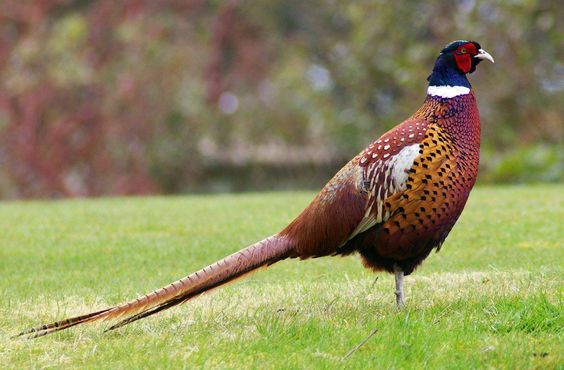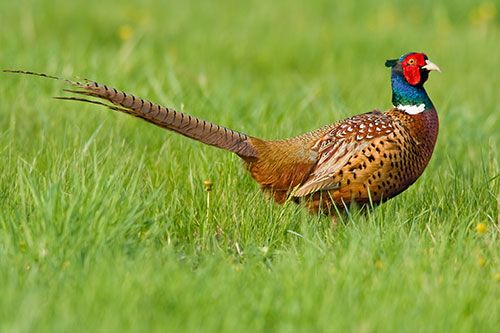The Ring-necked Pheasant, a native of Asia, is one of the maximum a hit and introduced birds in North the us. This species is fantastically popular as an upland recreation bird at some stage in a good deal of its range, and it can be the most studied species of Galliformes inside the international.
The male Ring-necked Pheasant has a remarkable multicolored plumage, lengthy tail, and chicken like look this is hard to confuse with some other North American hen. each sexes are fast runners and strong flyers for quick distances. Populations do great in hay and grain agricultural areas, specially areas with grassy area borders, wetlands, and numerous small patches of idle land with tall grass, forbs, and lesser amounts of brush and trees. Populations are hooked up on most midlatitude agricultural lands from southern Canada to Utah, California to the new England states, and south to Virginia. This species is normally raised in captivity and has been broadly added; many scattered and small populations occur outdoor the normal range.

As with maximum different chook species, meals and predation are critical affects on population tiers. panorama and habitat features additionally have an effect on demographic quotes; dense winter cover (e.g., cattails in wetlands), as an instance, is especially vital for survival all through years with excessive bloodless, wind, and heavy snow fall. The most serious challenge in most areas, but, is associated with adjustments within the agricultural industry from small multi crop farms to huge mono-cultures with easy farming practices. severa nests also are destroyed annually by way of hay-mowing.
Feeding Behavior
usually feeds on ground, now and again in timber. On floor, scratches with toes or digs with invoice to discover meals.
Family
Pheasants and Grouse
Eggs
usually 10-12, from time to time 6-15 or extra. simple olive-buff, hardly ever pale blue. girls every now and then lay eggs in every others' nests or in the ones of other birds; clutches of extra than about 18 probable end result from or extra women. Incubation is through woman only, 23-28 days. young: Downy younger leave nest with woman quickly after hatching; in general feed themselves. Male may not often accompany woman and brood. younger capable of short flights at about 12 days, but live with woman for 10-12 weeks.
Habitat
Farms, fields, marsh edges, brush. can also stay in any semi-open habitat. from time to time in open grassland however greater frequently in brushy meadows, wooded area edges, hedgerows, farmland with combined plants. access to water can be vital; pheasants are regularly common round edges of marshes, and are hardly ever observed in very arid locations.
 |
| Image Source: flickr.com |
Young
Downy young leave nest with female shortly after hatching; in most cases feed themselves. Male may additionally hardly ever accompany lady and brood. younger capable of short flights at approximately 12 days, but live with woman for 10-12 weeks.
Diet
Omnivorous. diet varies with season and vicinity. Feeds on huge kind of grains and smaller seeds, fresh green shoots, buds, roots, berries, insects, spiders, earthworms, snails; not often eats lizards, snakes, frogs, rodents. food plan may additionally encompass more seeds in wintry weather, greater insects in summer.
Nesting
Male defends territory by means of taking raised perch, giving crowing call even as in short drumming with wings. One male may additionally have numerous mates, the ladies associating with each other in a small flock on his territory. In courtship, male struts in half of-circle around female with returned and tail feathers tilted closer to her, near wing drooping, face wattles swollen. Nest web site is on floor in dense cowl. Nest (built by female) is shallow melancholy lined with grass, leaves, weeds.

















No comments:
Post a Comment